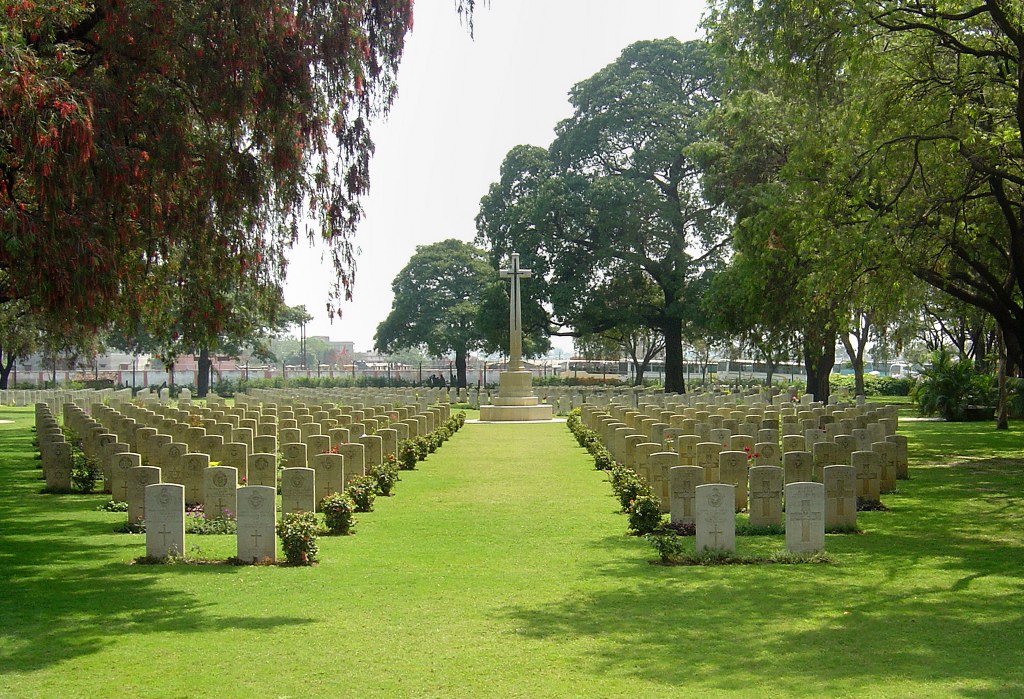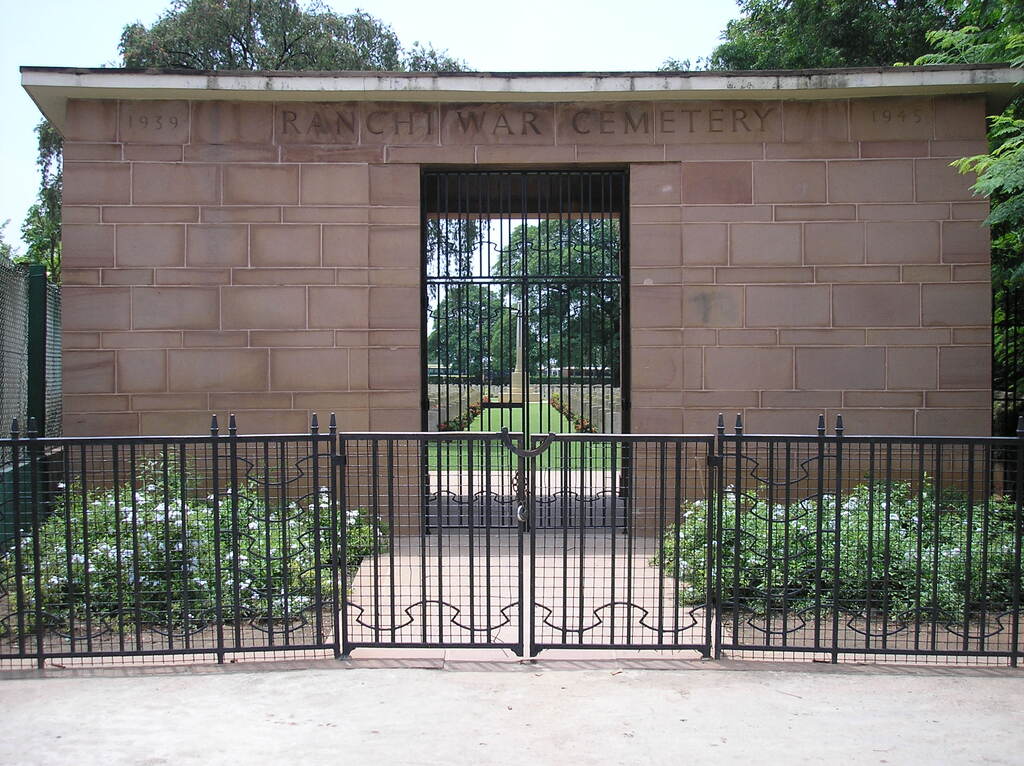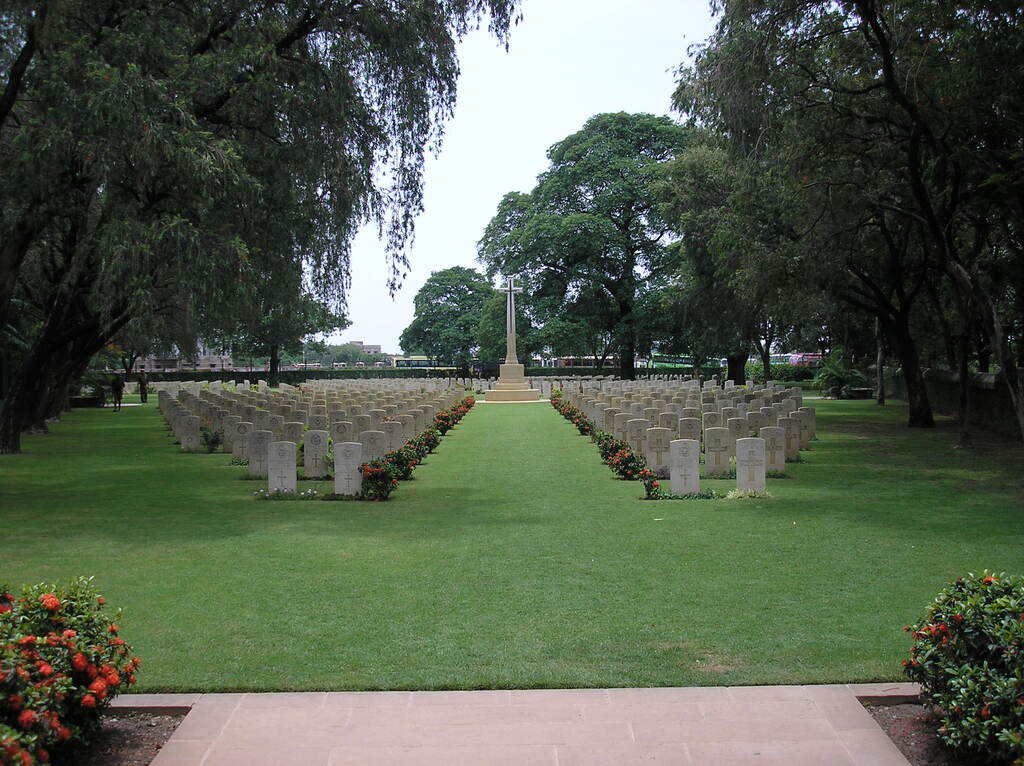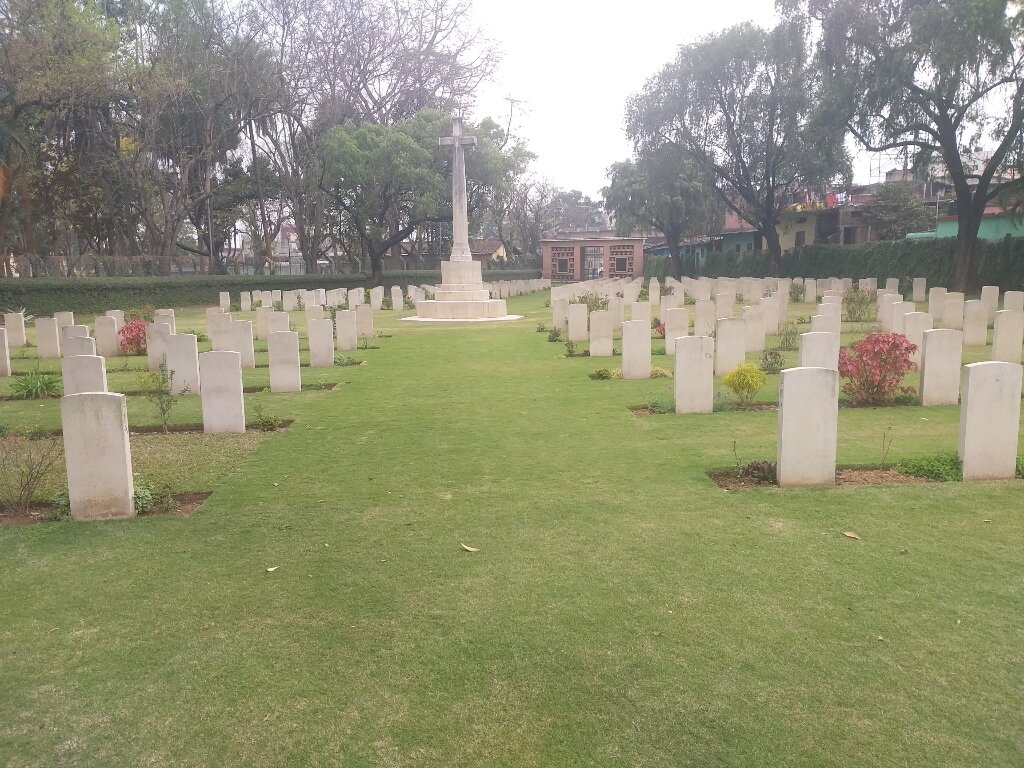Ranchi War Cemetery
- Country India
- Total identified casualties 703 Find these casualties
- Identified casualties from Second World War
- GPS Coordinates Latitude: 23.36334, Longitude: 85.34405
Cemetery Spotlight - Ranchi War Cemetery
Ranchi War Cemetery holds just over 700 Commonwealth servicemen of the Second World War.
Started in June 1942, Ranchi was used up until the end of the Second World War, housing casualties from a variety of backgrounds, roles, and armed forces. Approximately 200 graves were transferred to Ranchi in 1952, making it the smallest CWGC “concentration” cemetery in India.
Ranchi is a place of serenity and dignity of the cemetery amidst a bustling urban setting. It serves as a quiet place of reflection, not just for families of the fallen, but also for locals and visitors alike.
The universality of sacrifice is highlighted by the cemetery in testament to soldiers from many nations, backgrounds, and faiths who came together in a global conflict. It’s a place where memory, respect, and history intersect quietly but powerfully.
As with all our sites, Ranchi is cared for by a dedicated team of highly skilled and motivated horticulture specialists.

A variety of day-to-day and long-term tasks, techniques, and treatments ensure Ranchi remains a fitting final resting place for the dead of the Second World War.
The maintenance team regularly carries out lawn mowing and edging, hedge, tree and shrub pruning, and cleaning and restoration of cemetery headstones to ensure they remain legible and respectful.
Signage, pathways, and visitor amenities are kept in excellent condition to provide a welcoming and serene experience for all visitors.
The Commission’s horticulture standards on aspects like headstone status, turf management, and planting of local species are rigorously followed, although we have had to adapt our approach to suit Ranchi’s climate and conditions.

Tropical plant varieties are integrated thoughtfully into the landscape, ensuring both environmental harmony and a visually soothing, respectful space that honours the memory of the fallen.
However, Ranchi’s climate does present us with some unique challenges. The heavy monsoon season can make it difficult to access the cemetery. At times, horticulture operations are halted to ensure the health and safety of both our staff and visitors.
Drainage is particularly important in Ranchi for these reasons. Water management and irrigation systems are monitored and maintained to withstand the annual torrential monsoon rains.

The tropical environment means it's often hot and humid, which can lead to high numbers of pests like aphids, jassids, and fungus. We use organic pest management techniques as well as pre-and post-monsoon adaptive measures to reduce the number of pests in the war cemetery.
Sustainability is at the core of what we do at Ranchi. We use native and climate-resilient plant species, reduce water consumption through efficient practices, and favour manual gardening techniques over the use of machinery whenever possible to ensure we are lowering our environmental impact without compromising on the cemetery’s care.

These sustainable efforts are clearly reflected in the cemetery’s well-maintained lawns, effective water conservation during dry periods, and the support of local biodiversity, all of which contribute to a respectful and environmentally responsible memorial space.

Visitors to Ranchi often express surprise and reverence, many discovering for the first time the role Indian and Commonwealth soldiers played in World War II. Locals come and sit to enjoy peace, quiet, and contemplation.
We will also occasionally host educational groups as part of history or heritage programs. Some family members of the buried still make the journey to pay respects, even decades later. All are welcome.
Location information
Ranchi is a town in the State of Jharkhand, some 419 kilometres. north-west of Calcutta. It can be reached by air from Delhi, Kolkata and Patna.
The War Cemetery is on Old Hazari Bagh Road, about 1.5 kilometres from Ranchi railway station. It is situated next to the SPG Christian Cemetery near Kantatoli Chowk.
The Cemetery entrance being several metres off the road can easily be missed.
Visiting information
ARRIVAL
Routes to the cemetery are signposted.
PARKING
It is possible to park outside the cemetery at the side of the main road. There is space for 2 vehicles.
The distance from the off-street parking to the main entrance is approximately 8 metres.
ACCESS, LAYOUT AND MAIN ENTRANCE
The cemetery is a large triangular shaped cemetery adjacent to the municipal cemetery.
There is a small concrete ramp (with no handrails) running from the roadside down onto a concrete paved area in front of the the main entrance. There is a drainage channel between the road and the ramp down to the paved area.
There is a double latched gate, 2 metres wide total, opening outwards from the paved area onto a stone pathway leading to the main entrance
The main entrance is a stone shelter building, with access into the cemetery via a double gate (2 metres wide total and 1.8 metres tall). The gate has a sliding latch which is locked outside working hours (see below) and opens outwards towards the roadside.
There is one step down from the shelter building paving to a paved pathway leading into the cemetery.
The cemetery Register Box is in the shelter building.
There are stone benches located on either side of the entrance gates within the shelter building.
The Cross of Sacrifice is in the centre of the cemetery.
There are stone benches and seating areas in the cemetery – two at the rear of the cemetery and two facing the Cross of Sacrifice from either side of the site. All are shaded by trees
All internal paths are grass, and the ground is flat.
ADDITIONAL INFORMATION
The cemetery is open Monday to Friday 0800 hrs to 1700 hrs and Saturday morning 0800 hrs to 1200 hrs.
Outside of the opening hours the cemetery is locked.
Access to the cemetery Register is only available during gardener/caretakers' working hours.
History information
After the fall of Rangoon in March 1942, the probability that the Japanese would occupy the whole of Burma constituted a grave threat to India and Ceylon. The forces available for defence were dangerously weak; apart from those deployed on the north-west frontier and on internal security, there were only seven divisions, and these lacked ancillary troops and equipment. The air force and airfields were inadequate and the fleet as a whole was in no position to dispute command of the Bay of Bengal. In March and April 1942, 100,000 tons of shipping were sunk in the bay. Internal disturbances in India presented an additional threat, and some of the worst troubles occurred in districts of Bihar.
In May 1942 five further divisions reached India, followed in June by two more, and the air force strength was increased. Ranchi became an important base, and the 70th Division, less one brigade in Ceylon, was posted there to meet any sea-borne attack on the Orissa coast, and to form the only reserve to support Assam or Bengal.
The cemetery was begun on 1 June 1942 by the army, and used until the end of the war. Afterwards graves from isolated positions and small inaccessible cemeteries were brought in, and in 1952, more than 200 graves were transferred to the cemetery from twelve civil cemeteries. Ranchi is the smallest 'concentration' cemetery in India.
There are now 704 Commonwealth servicemen of the Second World War buried or commemorated in this cemetery.





